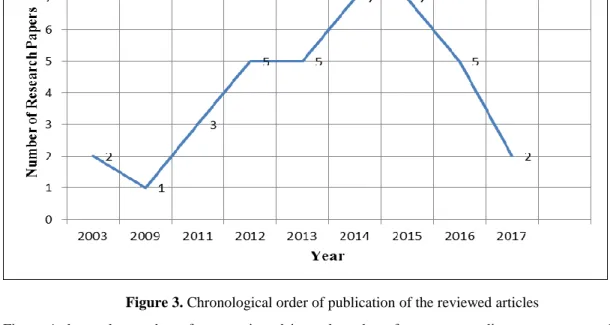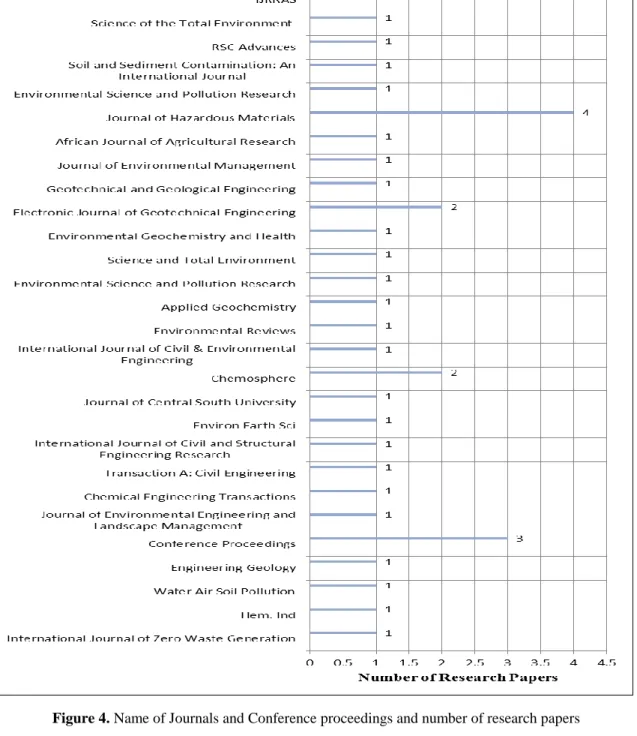contaminated soils
Théodore Gautier L.J. Bikoko
1, Jean Claude Tchamba
2, Felix Ndubisi Okonta
11Department of Civil Engineering Science, University of Johannesburg, PO BOX 524, Auckland Park, Johannesburg, South Africa, lejeunegautier@rocketmail.com
2Civil Engineering Laboratory, ENSET, University of Douala, PO BOX 1872, Douala, Cameroon
ABSTRACT. Soil improvement or soil treatment is the process of mixing binder (s) such as cement, blast furnace slag, fly ash, lime, basic oxygen furnace slag, desilicated fly ash, high carbon fly ash, modified clay, silica fume, sodium silicate, bentonite, dicalcium phosphate, high refractory cements, zeolite, activated carbon and others to the contaminated soil in order to improve its strength, bearing capacity, density, stiffness, workability, durability (e.g. freeze-thaw, wet-dry) and decrease its plasticity, leachability, porosity, permeability and compressibility. This process aims at minimising or controlling or stabilizing the rate of contaminant migration into the environment in order of converting them into less soluble, mobile, or toxic forms. Although there are many researches on improvement or treatment technology, very few investigations have been reported on binders of different combinations or in blended systems for the improvement or treatment of contaminated soils. Hence, this paper seeks to fill that knowledge gap in the literature by providing a critical review of binders of different combinations or in blended systems for the improvement or treatment of contaminated soils. This paper also proposed a model which researchers can use for selecting the journal for publishing their research works.
KEYWORDS: Binders, combinations, contaminated soils, improvement, treatment.
1. Introduction
The contamination of soil or soil pollution is a global phenomenon and has posed serious threat to both environment and human health. For example, it has been reported that lead (Pb) is a possible cause of human cancer [FAL 14], [TAN 12], and that Nickel (Ni) exposure produce hematological effects in both animals and humans. Sources of soil contamination include industrial activities, mining operations, various chemical industries, oil and fuel waste dump, pesticides application on farmlands, acid rainfall, insecticide and herbicides, effluent, fly ash, seepage of contaminated water or leachates from landfills, amongst others. Thus, soil treatability technologies are needed in order to design suitable binder(s) for the contaminated soil to correct historical and currently contaminated sites for the reasons being pollution deteriorates environmental quality and impacts negatively on the ecosystem health. Different methods have been used to treat or stabilised contaminated soils or hazardous wastes in the past and recent times as contaminants can cause fire or explosion hazard or may be corrosive and damage building materials or services. Among these methods, cementitious-based soil mix technologies have been largely used and reported by many researchers [KOG 11], [JIN 16]. Contaminated soils are usually stabilised or treated with binding materials such as cement, blast furnace slag, fly ash, lime, basic oxygen furnace slag, desilicated fly ash, high carbon fly ash, modified clay, silica fume, sodium silicate, bentonite, dicalcium phosphate, high refractory cements, zeolite, activated carbon, amongst others to improve their engineering properties as well as durability performances in order to make them suitable for construction. This paper aims at reviewing the binders of different combinations or in blended systems for the improvement or treatment of contaminated soils on one hand, and on the other hand it proposed a model which researchers can use for selecting the journal for publishing their research works.
2. Method of Study
Management, Chemical Engineering Transactions, Transaction A: Civil Engineering, International Journal of Civil and Structural Engineering Research, Journal of Central South University, Chemosphere, International Journal of Civil & Environmental Engineering, Environmental Reviews, Applied Geochemistry, Environmental Science and Pollution Research, Science and Total Environment, Environmental Geochemistry and Health, Electronic Journal of Geotechnical Engineering, Geotechnical and Geological Engineering, Journal of Environmental Management, Journal of Hazardous Materials, etc. were used for writing this paper. Only published works in the English language were included. Papers dating from 2003 to 2017 have been reviewed.
3. Existing Research on Binders of different combinations or in blended systems for the improvement or treatment of contaminated soils
In 2016, [JIN 16] have published the results of an extensive research on the three –year performance of in-situ solidified/stabilised (S/S) soil using novel MgO-bearing binders, the authors reported that the addition of Inorgano-organo-clay (IOC) slightly decreased the strength (Figure 1) and the permeability of the S/S materials. In the same study the authors stated that the replacement of MgO by ground granulated blast-furnace slag (GGBS) significantly enhanced the strength and it was found that MgO alone is superior in immobilising both inorganic and organic contaminants. [ FAL 14] reported that soil texture, the percentage of binders used and lead concentration in soil significantly influence the performance of the S/S treated soils in terms of curing, compressive and weather cycling strength.
Figure 1. UCS variation with depth of the 3-year S/S cores [JIN 16]
The results published by [WAN 15] indicated that PC, PFA at a ratio of 1:2 and MgO, GGBS at a ratio of 1:9 provide better performance in strength development and immobility of heavy metals and total organics at 1.5-year. PFA is effective in decreasing the leachability of organics and also increases the leachability of metals. [DU 17] experimented about the influence of combination of epoxy resin and ground-granulated blast furnace slag (GGBS) on the mechanical performance and leaching resistance properties of marine sediments. For this, the authors performed unconfined compressive strength, Young's modulus, hydraulic conductivity and leaching behavior tests on stabilized samples. XRD, SEM, EDX and moisture content tests were also carried out. On the basis of results obtained, the paper concluded that the mechanical performance is sensitive to the dosage of resin. The UCS values decrease with the resin concentrations ranging from 5% to 40%. The stabilized sediment sample with 5% of resin gave the best strength as well as excellent Young's modulus. The hydraulic conductivity values up to 14 days decreases with permeation time (Figure 2).
Figure 2. Hydraulic conductivity of different samples [DU 17] 4. Result of Review
Figure 3 shows the chronological order of articles considered in this research. It can be seen that most of the studies were published between 2014 and 2015 and it is clear that very few researches have used binders of different combinations or in blended systems for the improvement or treatment of contaminated soils. In year 2014 and 2015 only seven research works respectively have used binders of different combinations or in blended systems for the improvement or treatment of contaminated soils. Apart from this, the below figure also highlights the wide gap in research work related to stabilisation technology.
Figure 3. Chronological order of publication of the reviewed articles
Figure 4 shows the number of peer-reviewed journals and conference proceedings covers research papers which are based on binders of different combinations or in blended systems for the improvement or treatment of contaminated soils. It is clear that the number of peer-reviewed journals welcomes the research works related to binders of different combinations or in blended systems for the improvement or treatment of contaminated soils. Therefore, researchers can use the below graph for selecting the journal for publishing their research works.
Figure 4. Name of Journals and Conference proceedings and number of research papers
5. Conclusion
This paper aims at reviewing the binders of different combinations or in blended systems for the improvement or treatment of contaminated soils on one hand, and on the other hand it proposes a model which researchers can use for selecting the journal for publishing their research works. Based on the conducted study, the following conclusions are drawn:
The hydraulic conductivity values up to 14 days decreases with permeation time (Figure 2). Cd, Cu, Pb, Ni, Zn, Paraffin oil, Diesel are common contaminants found in soils. Freeze thaw, wet-dry tests are not common used
[DU 17] DU J., BU Y., GUO S., TIAN L., SHEN Z., « Effects of epoxy resin on ground-granulated blast furnace slag stabilized marine sediments » , RSC Advances, vol.7, 2017, p. 36460–36472.
[FAL 14] FALCIGLIA, P.P., Al-TABBAA, A., VAGLIASINDI F.G., «Development of a performance threshold approach for identifying the management options for stabilisation/solidification of lead polluted soil », Journal of Environmental
Engineering and Landscape Management, 2014, iFirst: 1–11.
[JIN 16] JIN, F., WANG F., Al-TABBAA, A., « Three- year performance of in-situ solidified/stabilised soil using novel MgO-bearing binders», Chemosphere, vol. 144, 2016, p. 681-688.
[KOG 11] KOGBARA B., YI, Y Al-TABBAA, A., « Process envelopes for stabilisation/solidification of contaminated soil using lime-slag blend », Environmental Science and Pollution Research, vol. 18, n° 8, 2011, 1286-1296.
[KOG 13] KOGBARA, B., «A review of the mechanical and leaching performance of stabilized/solidified contaminated soil », Environmental Reviews, vol. 22, 2013, p.66-86.
[PER 05] PERERA A.S.R., The role of accelerated carbonation in the ageing of cement based stabilised/solidified contaminated materials, Ph.D. Thesis, Cambridge University, 2005.
[PER 05] PERERA, A.S.R., Al-TABBAA, A., «The role of accelerated carbonation in the accelerated ageing of stabilised/solidified waste forms », In Proceedings of the International Conference on stabilisation/solidification treatment
and remediation, Cambridge. Taylor and Francis, London, 2005, pp. 181–191.
[TAN 12] TANG, X., YANG J., «Long-term stability and risk assessment of lead in mill waste treated by soluble phosphate »
Science of the Total Environment, vol. 438, 2012, p. 299–303.
[WAN 15] WANG, F., WANG H, AL-ABBAA A., «Time-dependent performance of soil mix technology stabilized/solidified contaminated site soils», Journal of Hazardous Materials, vol. 286, 2015, p. 503–508.
![Figure 1. UCS variation with depth of the 3-year S/S cores [JIN 16]](https://thumb-eu.123doks.com/thumbv2/123doknet/14750452.579877/2.892.249.662.441.728/figure-ucs-variation-depth-year-s-cores-jin.webp)

